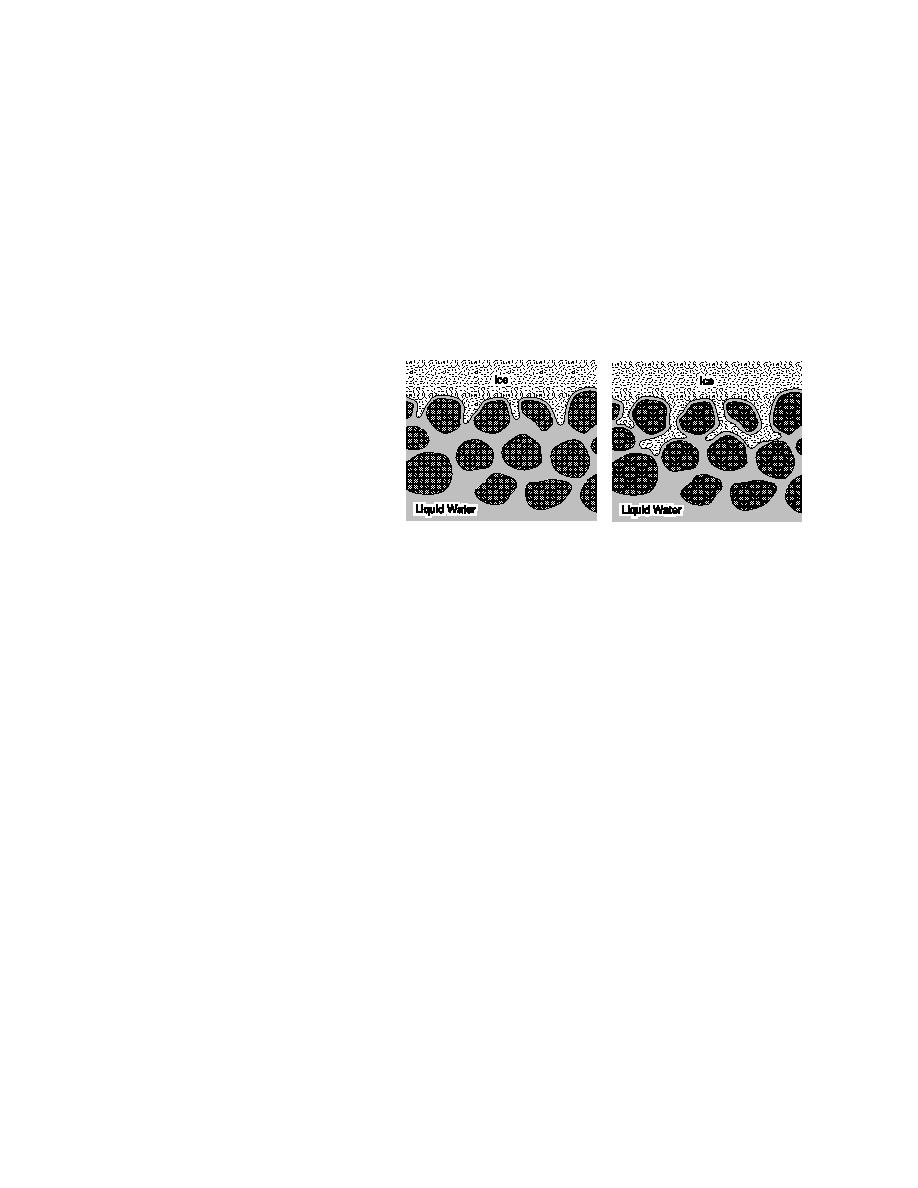
Initial Results From Small-Scale
Frost Heave Experiments in a Centrifuge
STEPHEN A. KETCHAM AND PATRICK B. BLACK
INTRODUCTION
Frost heave is the displacement of soil
caused by the formation of segregated
ice lenses in a freezing soil body. Al-
though the process is complicated, a
number of researchers have developed
models to describe and analyze the me-
chanics of frost heave [see Kay and Per-
fect (1988) and Nakano (1990) for recent
a. Primary heave.
b. Secondary heave.
reviews]. One of these is Miller 's (1978,
Figure 1. Frost heave scenarios.
1980a) "Rigidice model."
In the Rigidice model the soil body
is divided into three regions. The first region com-
eling of frost heave would best be conducted as
prises already-frozen soil that might contain relic
a body force analog and that a small-scale frost
ice lenses but definitely contains a growing ice
heave test conducted in a centrifuge would be
lens. The second region, which contains a grow-
appropriate for this purpose.
ing ice lens at one end and unfrozen soil at the
An objective of our ongoing work is to experi-
other, is called the frozen fringe (Miller 1978,
mentally confirm Miller 's conclusion and the scale
1980b). The third comprises unfrozen soil and is
factors inherent in his scaling analysis. This re-
the source of mass and energy for the heaving
port presents a brief overview of frost heave cen-
process. Miller (1978, 1980b) calls this three-re-
trifuge modeling from two perspectives: conven-
gion frost heave scenario "secondary heave." In
tional geotechnical centrifuge modeling and scal-
a variation of secondary heave, which Miller des-
ing of the differential equations of the Rigidice
ignates "primary heave," there is no frozen fringe
model. We describe two initial model experiments
but rather an abrupt boundary between the grow-
in which silt specimens were partially frozen in
ing ice lens and the unfrozen soil. Figure 1 illus-
8-g and 32-g centrifugal fields. The experiments
trates primary and secondary heaving conditions.
were performed to provide a basis for equipment
Miller presented a mathematical description
development and further experiments. Plans for
of the Rigidice model in 1978. He followed with
the equipment and future tests are presented as
finite-element (O'Neill and Miller 1985) and fi-
well.
nite-difference implementations (Black and Miller
1985), comparisons to experimental data (Black
and Miller 1985) and a scaling analysis of the gov-
CENTRIFUGE MODELING
erning equations of the model (Black 1985, Miller
BACKGROUND
1990). Of particular interest for this paper is
Miller 's scaling analysis. This analysis and the
Physical modeling is the testing of a small-scale
distinct role of gravitational body force in the heav-
model so that the response of a prototype can be
ing process led Miller to conclude that scale mod-
inferred from the model response. A model is




 Previous Page
Previous Page
